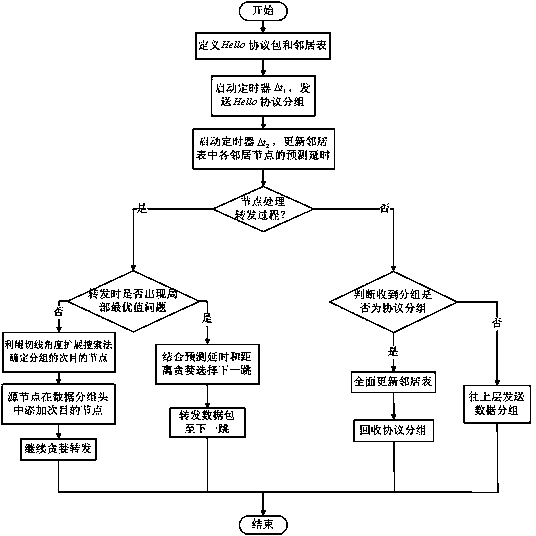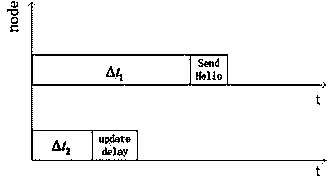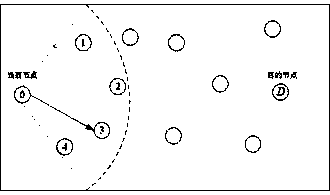Predictive low-delay geographical routing method
A geographical routing and low-latency technology, applied in the field of geographical routing in wireless sensor networks, can solve the problems of serious energy consumption and time consumption, hole bypass, high delay and uneven energy consumption, etc., to prolong life and balance network load , the effect of reducing energy consumption
- Summary
- Abstract
- Description
- Claims
- Application Information
AI Technical Summary
Problems solved by technology
Method used
Image
Examples
Embodiment Construction
[0023] 1) Definition Protocol packet: Add three new fields in the packet header, respectively carrying the average receiving rate of node data packets , the average packet sending rate and the node's current queue size Three pieces of information; the node calculates the average receiving rate and average sending rate of data packets, as follows:
[0024] (1)
[0025] (2)
[0026] in is the time interval between two adjacent packets arriving at the node, is the time interval between two adjacent packets leaving the node, Indicates the number of calculations, for the value range of scale factor.
[0027] 2) Each node maintains a neighbor table to store the information of its neighbor nodes, mainly including the neighbor node number, coordinate position, average receiving rate of data packets, average sending rate of data packets, current queue size of any neighbor node, and delay Information and life cycle, its neighbor table is as follows:
[0028]
...
PUM
 Login to View More
Login to View More Abstract
Description
Claims
Application Information
 Login to View More
Login to View More - R&D
- Intellectual Property
- Life Sciences
- Materials
- Tech Scout
- Unparalleled Data Quality
- Higher Quality Content
- 60% Fewer Hallucinations
Browse by: Latest US Patents, China's latest patents, Technical Efficacy Thesaurus, Application Domain, Technology Topic, Popular Technical Reports.
© 2025 PatSnap. All rights reserved.Legal|Privacy policy|Modern Slavery Act Transparency Statement|Sitemap|About US| Contact US: help@patsnap.com



